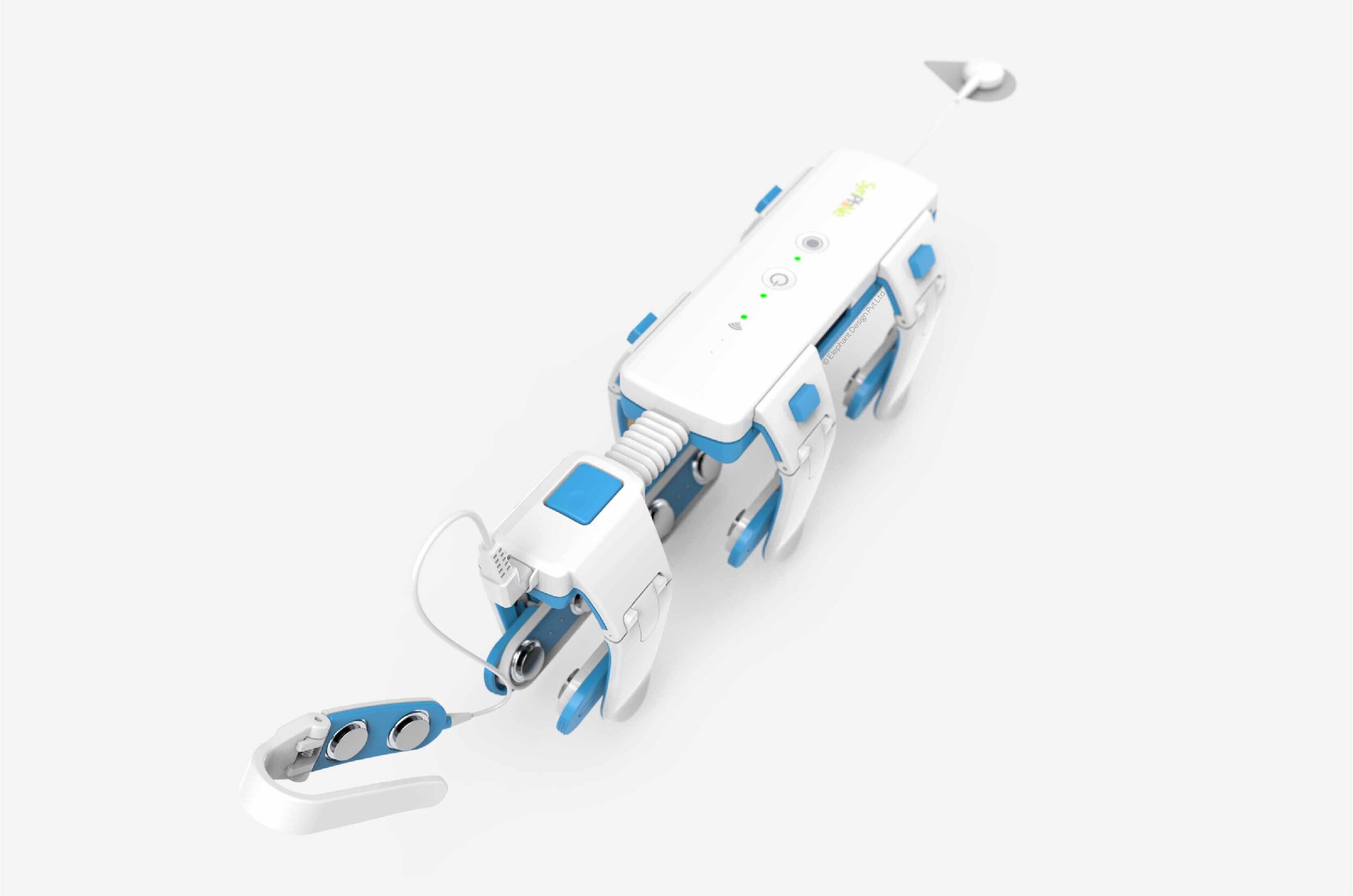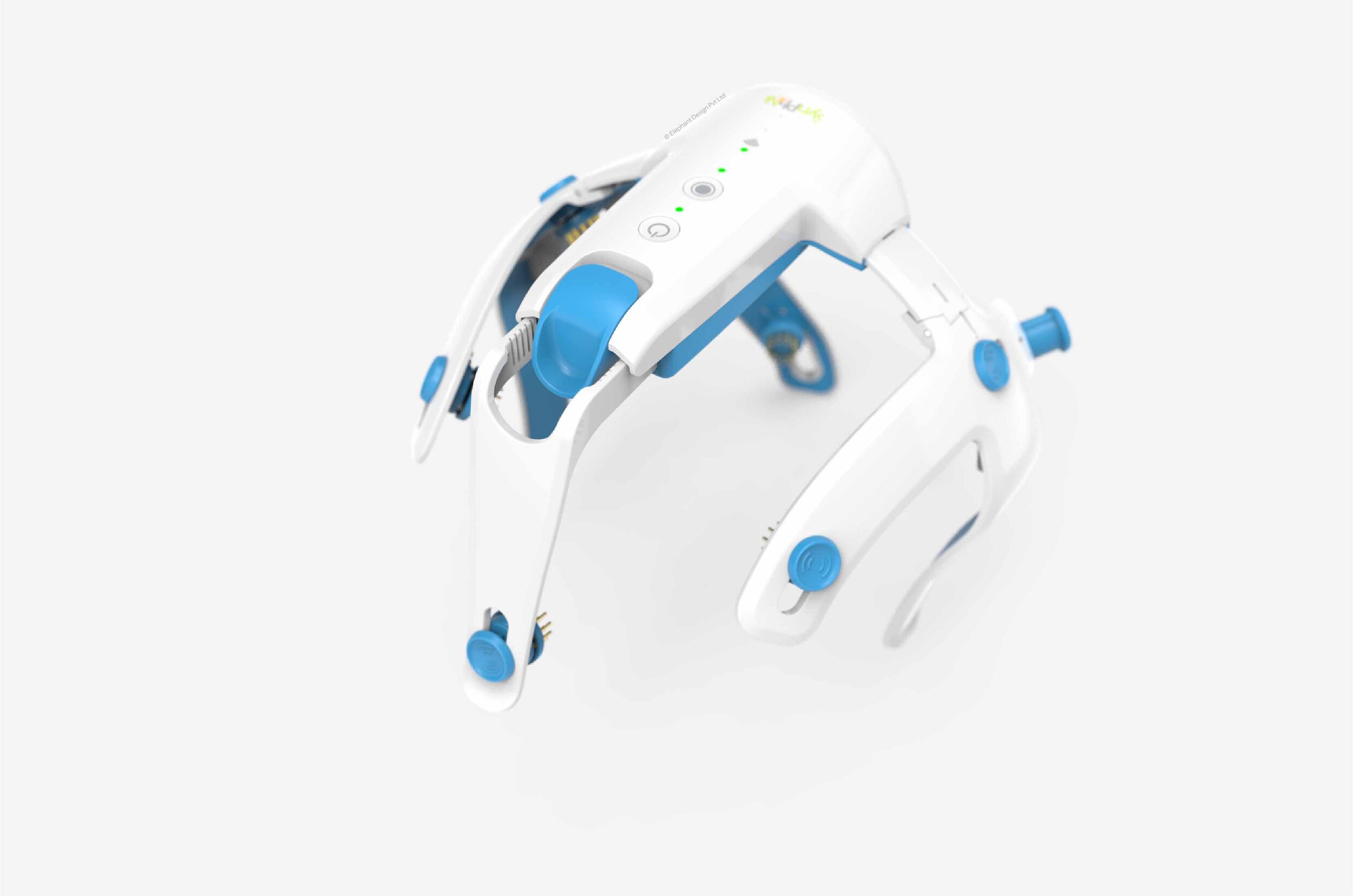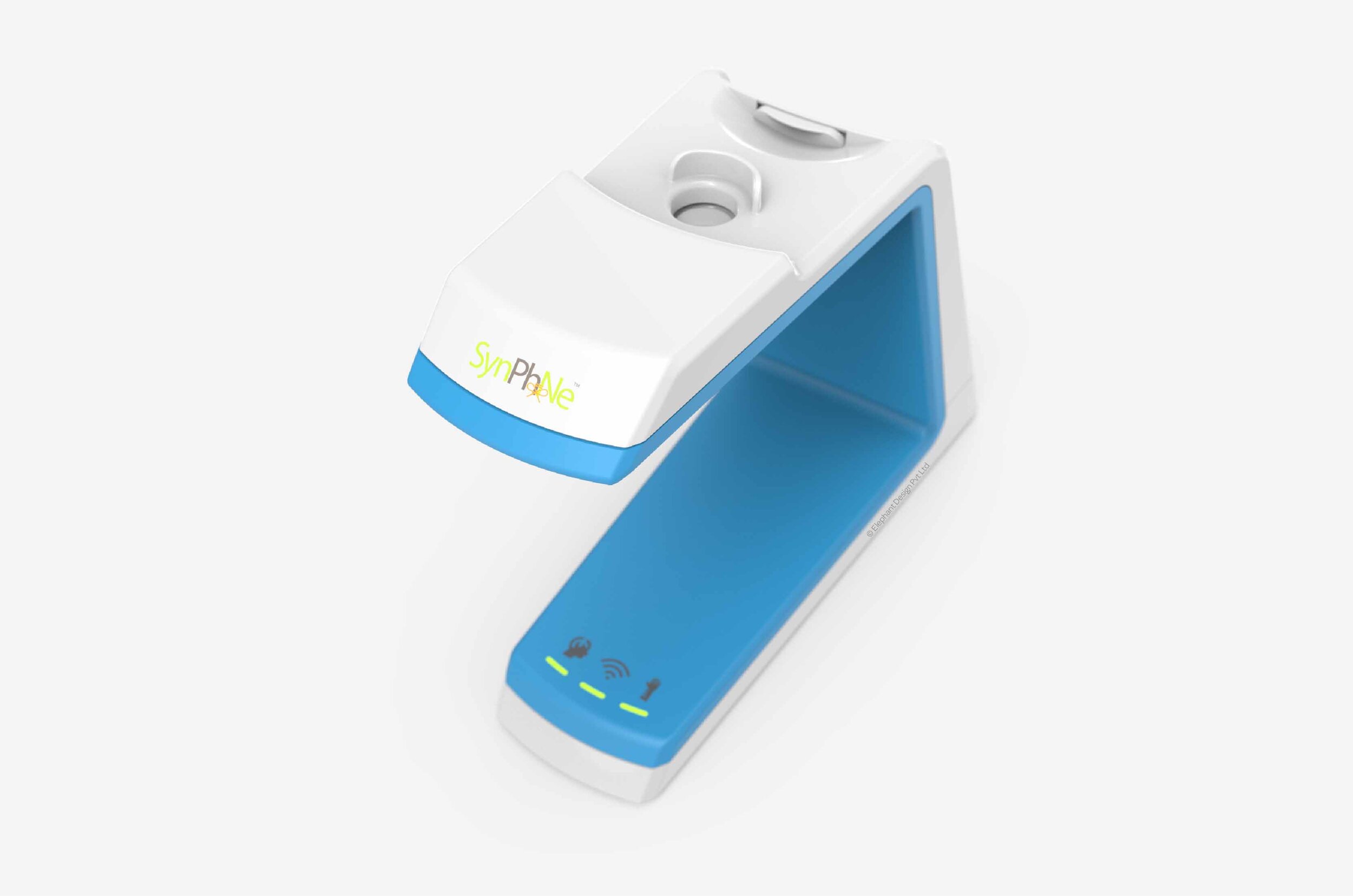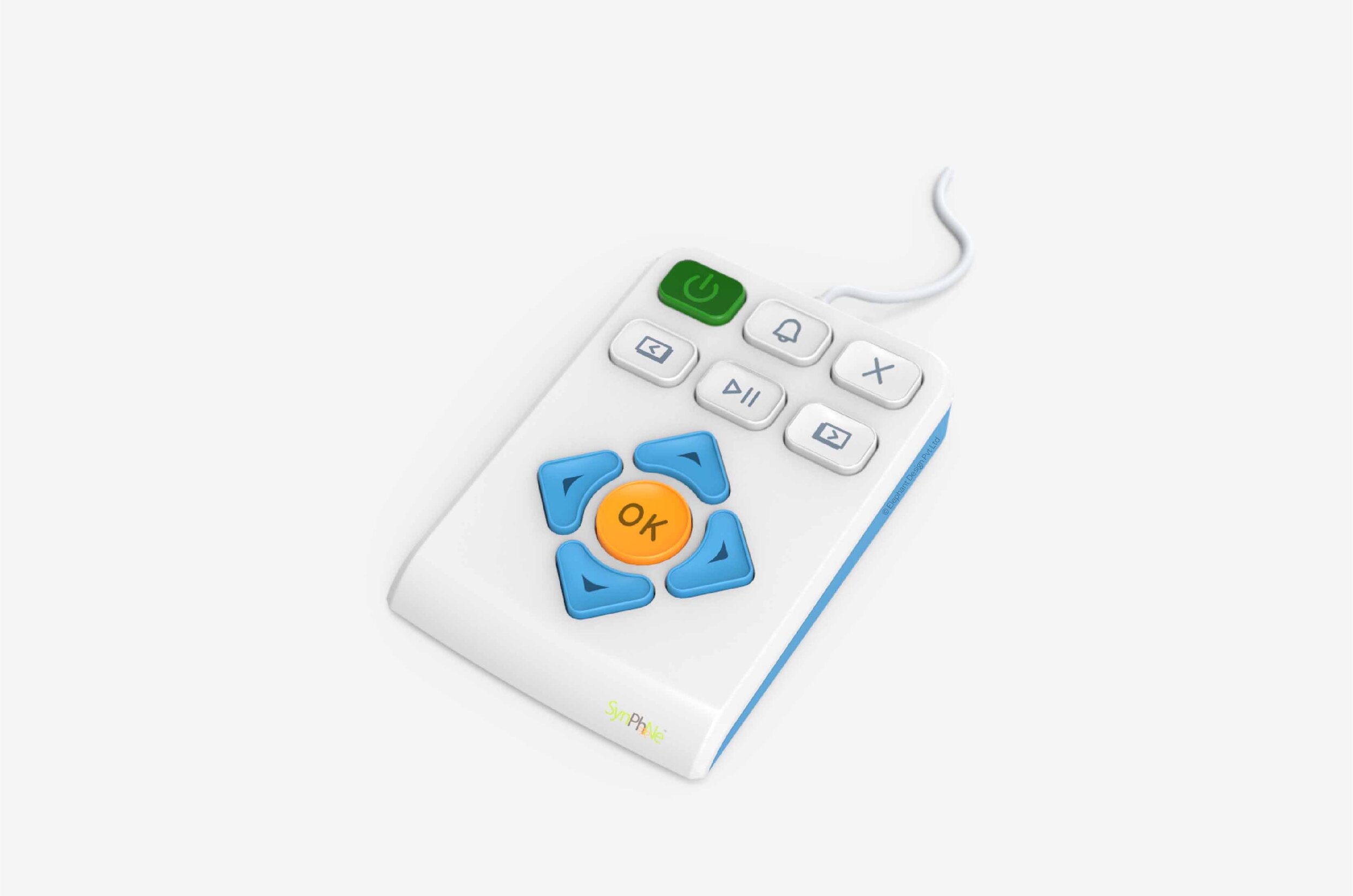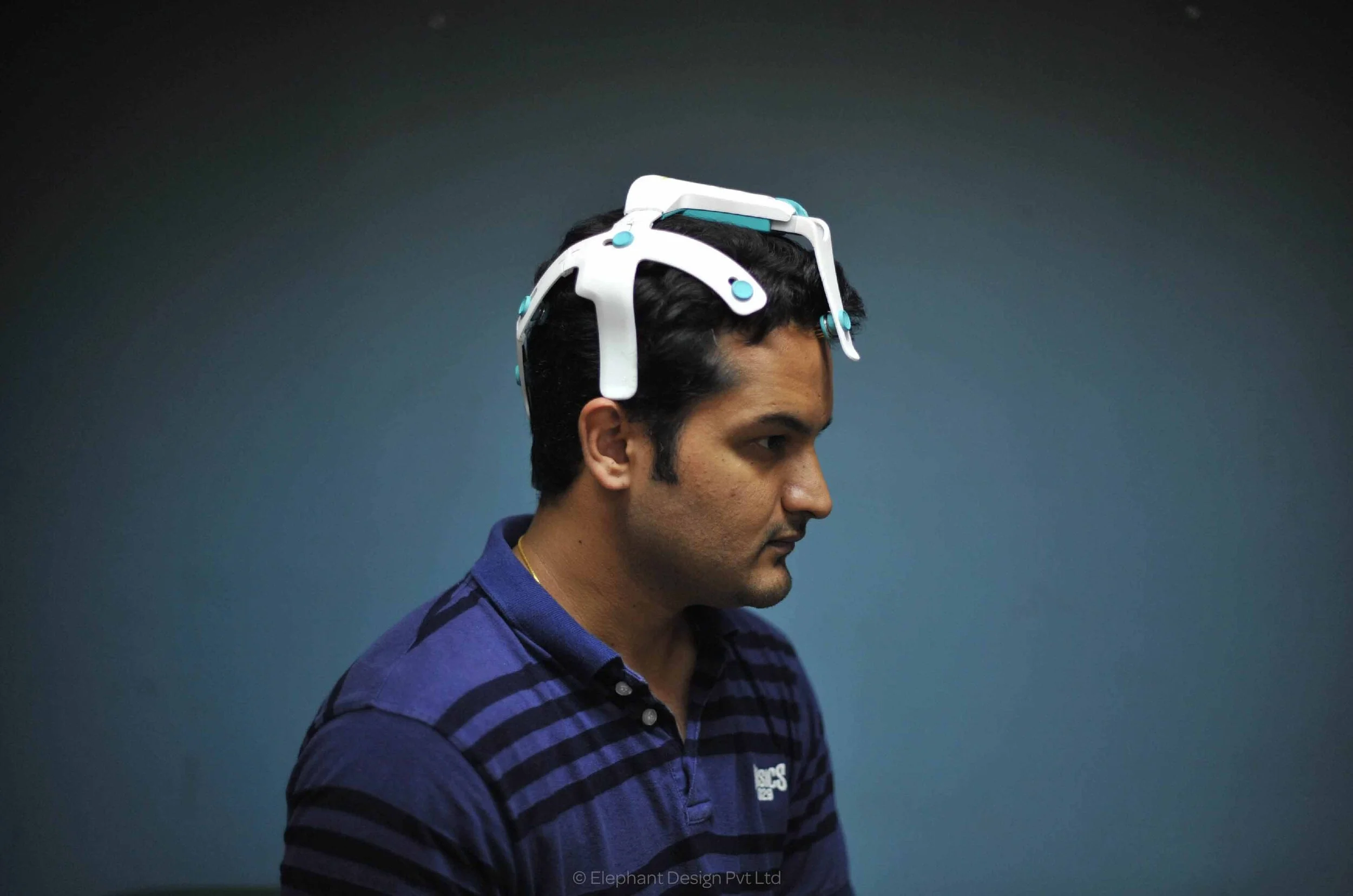The Focus
Synphne, a company whose mission was to ‘get people back to life’, had designed a highly functional device for the recovery and rehabilitation of stroke patients
The device had certain challenges in both, the aesthetic and the functional departments
A virtual interface also accompanied the device, which suffered from similar issues; reinforcing the need for a complete overhaul and ‘from scratch’ design process
The Design
After extensive research and several iterations, the team at Elephant managed to design a truly universal, modular and highly personalised set of devices
Elephant also managed to incorporate a range of features as compared to the prototype, resulting in a highly polished final product with a premium build quality
Most importantly, the devices were firmly embedded with the holistic brand identity of the company, highlighting on the ‘self-care’ aspect; where the virtual and the physical components were in complete sync.
The Story
According to the WHO, every year, 15 million people suffer from strokes all over the world. Of these, 5 million die, and 5 million are severely disabled. As we can see, this is one of the gravest ailments to have plagued the planet. What is perhaps even more striking is that a stroke survivor may also reach a point of total dysfunction, where their mind and body coordination are completely compromised.
Of course, this is not to say that there aren’t treatments and therapies available – but then again, the degree of recovery is also partial. With conventional physiotherapy, the patient shows some promise. However, depending on the how severe the stroke has been, even this can show a plateauing effect. It helps the patient regain some of their functions, but cannot do much more beyond that.
Enter Synphne, a highly optimistic and revolutionary device that works on targeting all the shortcomings that exist with conventional therapeutic methods. Synphne works on the basic premise that our brains are highly plastic. Thus, even if one particular area that is associated with a certain function has been damaged, we can still ‘shift’ the learning to another area! This, of course, demands the continuous retraining of the brain and a conscious effort on behalf of the patient. However, it has been shown to have a higher rate of success as compared to other existing practices.
It consists, primarily, of a headgear, a hand-augmentation component and a virtual software. All of these work in sync to provide treatment to the patient.
“Synphne works on the basic premise that our brains are highly plastic. Thus, even if one particular area that is associated with a certain function has been damaged, we can still ‘shift’ the learning to another area!”
When Synphne approached the team at Elephant, their prototype was extremely DIY and functional in nature. For instance, there were many wires involved, the headgear was made of cloth and the gel on the electrodes of the headgear needed to be replenished from time to time. The whole setup also took about an hour before work could begin.
Thus, from both, the aesthetic and the functional points of view, Synphne needed a proper overhaul before it could be disseminated far and wide. The team at Elephant took on this task and decided to venture into hitherto unknown territory.
“From both, the aesthetic and the functional points of view, Synphne needed a proper overhaul before it could be disseminated far and wide. The team at Elephant took on this task and decided to venture into hitherto unknown territory.”
From Tai Chi to IoT
Elephant started off by designing the core devices first. Since the creators’ intent was to incorporate the principles of healing and meditative techniques like Tai Chi in their technology, free and unencumbered movement was extremely necessary.
With comfort, convenience and flexibility in mind, the team produced designs that resulted in the elimination of wires altogether. All the components, from the headgear to the arm-wear were equipped with an independent battery, wireless connectivity and extremely sensitive sensors. High quality materials, like gold plated contacts on the gear increase the seamlessness of signal transfer.
All devices can now be activated quickly – within minutes, in fact, and can easily be set up by the patients themselves. This augments the ‘self-care’ component of the device and does not require additional manpower to set up and use.
Hand in Glove
One of the main challenges when it came to redesigning the headgear was making it a one-size fits all type of component. Personalisation is especially difficult since there is a general lack of anthropometric data when it comes to the Asian population. Data, hence, had to be collected from scratch for this to be accurate.
Different head sizes, shapes, varying lengths of hair, arm sizes, lengths, exceptional cases: an exhaustive number of factors needed to be considered before the head gear was finally developed. To enable perfect transfer of impulse and data, the sensor points have been made extremely flexible and customisable.
“With comfort, convenience and flexibility in mind, the team produced designs that resulted in the elimination of wires altogether. All the components, from the headgear to the arm-wear were equipped with an independent battery, wireless connectivity and extremely sensitive sensors”
Recovery, Gamified
Gamification, as a feature and a component, has found several uses across different sectors and tech-centric applications. After having streamlined the analogous gear, we switched our attention to designing the virtual interface, which is key for retraining stroke patients.
The app, hence, is very easy to use. It is also visually stimulating, consists of playful graphics and aims to enable complete self-sufficiency. Muscle-pair exercises, for example, consist of manipulating one’s hands and fingers to make koala bears on screen climb a tree. These exercises increase in difficulty as the patient makes progress, involving more intricate challenges like rice-grain sorting and so on.
A host of other icons have been added to the UI, like the battery, WiFi signal strength, sensor connections, time and so on to enable the patient to keep track of everything.
The device has been shown to treat cases of palsy and strokes to a dramatic extent.
This device has also received great reception across the world. There are now therapy centres in India, parts of South East Asia, Johns Hopkins University and so on; where its applications are also being extended since the sheer potential of the device is showing through.
“Creativity is to discover a question that has never been asked. If one brings up an idiosyncratic question, the answer he gives will necessarily be unique as well.”




